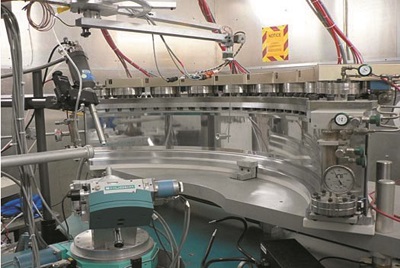The coming of age of macromolecular neutron crystallography
 The protein crystallography station (PCS),
located at the Los Alamos Neutron Scattering Center (LANSCE), was the first
macromolecular crystallography beamline to be built at a spallation neutron
source. Following testing and commissioning, the PCS user program was funded by
the Biology and Environmental Research program of the Department of Energy Office
of Science (DOE-OBER) for thirteen years. The PCS remained the only dedicated
macromolecular neutron crystallography station in North America until the
construction and commissioning of the MaNDi and IMAGINE instruments at Oak
Ridge National Laboratory, which started in 2012. The instrument produced a
number of research and technical outcomes that have contributed to the field,
clearly demonstrating the power of neutron crystallography in helping
scientists to understand enzyme reaction mechanisms, hydrogen bonding and
visualisation of H-atom positions, which are critical to nearly all chemical
reactions. During this period, neutron crystallography became a technique that
increasingly gained traction, and became more integrated into macromolecular
crystallography through software developments led by investigators at the PCS.
A review article published by Chen and Unkefer [(2016). IUCrJ. 4, doi:10.1107/S205225251601664X], highlights the
contributions of the PCS to macromolecular neutron crystallography, and gives
an overview of the history of neutron crystallography and the development of
macromolecular neutron crystallography from the 1960s to the 1990s and onwards
through the 2000s.
The protein crystallography station (PCS),
located at the Los Alamos Neutron Scattering Center (LANSCE), was the first
macromolecular crystallography beamline to be built at a spallation neutron
source. Following testing and commissioning, the PCS user program was funded by
the Biology and Environmental Research program of the Department of Energy Office
of Science (DOE-OBER) for thirteen years. The PCS remained the only dedicated
macromolecular neutron crystallography station in North America until the
construction and commissioning of the MaNDi and IMAGINE instruments at Oak
Ridge National Laboratory, which started in 2012. The instrument produced a
number of research and technical outcomes that have contributed to the field,
clearly demonstrating the power of neutron crystallography in helping
scientists to understand enzyme reaction mechanisms, hydrogen bonding and
visualisation of H-atom positions, which are critical to nearly all chemical
reactions. During this period, neutron crystallography became a technique that
increasingly gained traction, and became more integrated into macromolecular
crystallography through software developments led by investigators at the PCS.
A review article published by Chen and Unkefer [(2016). IUCrJ. 4, doi:10.1107/S205225251601664X], highlights the
contributions of the PCS to macromolecular neutron crystallography, and gives
an overview of the history of neutron crystallography and the development of
macromolecular neutron crystallography from the 1960s to the 1990s and onwards
through the 2000s.


